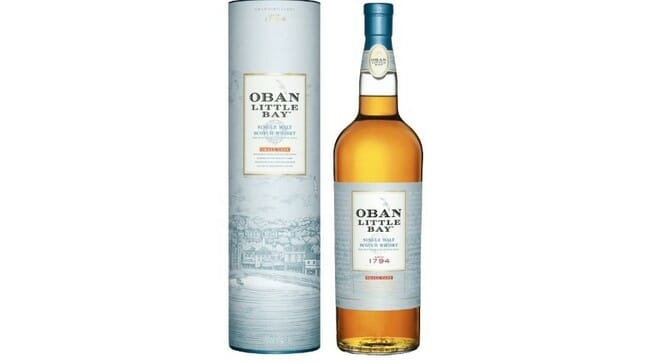Five More Whiskeys We’re Revisiting During Quarantine
Photos via Heaven Hill, Oban, George Dickel, Barrell Bourbon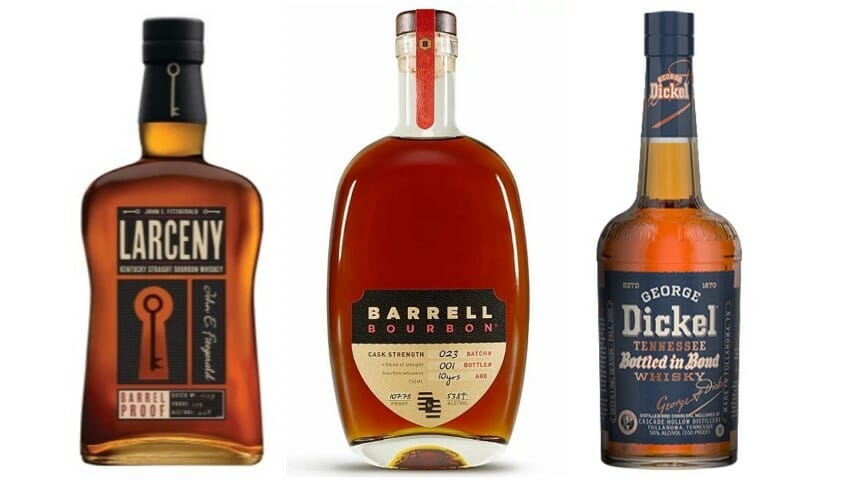
Paste readers seemed to appreciate the first,second and third rounds of whiskeys we’ve been revisiting during quarantine, so it seems a fourth is in order. Here are some more bottles I’ve been digging out from the back of the liquor cabinet to sample once again.
If you’re anything like me, you’re probably thanking your lucky stars or deity of choice right now for the fact that you were already maintaining a very well-stocked home bar before the world descended into its current, apocalyptic state. Because if there’s one thing you want to make sure you have on hand during the new societal age of social distancing, it’s … toilet paper. But it doesn’t hurt to have some whiskey, either.
With that thought in mind, during the ongoing coronavirus (COVID-19) pandemic, I’ve been returning to the back shelves of my liquor cabinet with more regularity, re-sampling some of the various bottles of whiskey I haven’t necessarily been thinking about recently. It’s been a good opportunity to revisit some old classics and bottles I’d half forgotten about, while possibly finishing off some of those pesky bottles that have been hanging on to their last two ounces for a year or more.
Here, then, are five more interesting bottles of whiskey I’ve been revisiting during quarantine. If your state’s liquor stores are still in operation, consider picking up some quarantine whiskey for yourself!
1. Elijah Craig RyeMSRP: $30
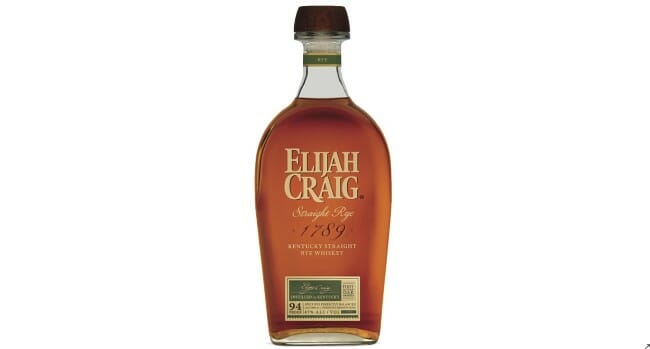
One of my favorite developments in the whiskey world in the last few years has been a resurgence in the number of moderately priced, widely available rye whiskey staples. The addition of brands such as Old Forester Rye and Elijah Craig Rye have helped beef up the category, adding more of an affordable middle ground to sit between the rock-bottom pricing of something like Jim Beam’s Old Overholt and the luxury rye territory of WhistlePig and others. There’s a lot more rye now in the $20-40 range than there used to be, and many of them are exemplary for both cocktails and neat drinking.
Heaven Hill’s Elijah Craig Rye falls right in the middle of that range, with a very affordable $30 pricetag and a standard Kentucky-style rye mash bill of only 51% rye, 35% corn and 14% malted barley. It might seem like an unnecessary step at first glance to extend the Elijah Craig line to its first rye when it’s only been producing bourbon for 35 years, especially when Heaven Hill already produces products like the 100 proof Rittenhouse Rye, but Elijah Craig Rye seems to intend to offer a subtly different experience. Rather than the punchier, younger, spicier profile of Rittenhouse, Elijah Craig Rye is trading a little bit of proof and assertiveness for what is likely a few more years of age, despite the fact that it’s still non-age-stated. In fact, I wouldn’t be surprised if the age on Elijah Craig Rye was more or less the same as the distillery’s 6-year-old Pikesville Rye, which carries a $50-60 MSRP at 110 proof. Given that, Elijah Craig Rye (at 94 proof) looks like a heck of a value.
In terms of flavor, Elijah Craig Rye forges a crowd-pleasing balance between bourbon and rye influences, being considerably sweeter and richer than some of the very rye-forward whiskeys that have come to the forefront of this genre in recent years. As I wrote previously:
On the palate, I immediately noted the smooth and slightly oily mouthfeel, which coats the palate first in a corny sweetness, the slightest hint of peanut butter, and into rich caramel and vanilla, before segueing hard into the rye spice, which leads to a long-lasting mint note on the finish. There are some fruit elements as well, with a slight apricot-like stone fruit and a more prominent “apple pie” spiciness, like caramelized Granny Smiths with cinnamon sugar, and a bit of barrel char. There’s a good amount of caramelization overall—sweeter, certainly, than some of the MGP ryes I’ve sampled more recently like Heaven’s Door Rye, but almost as spicy at the same time. It is, in short, very well balanced between elements one tends to associate with both bourbon and rye whiskey.
2. Barrell Bourbon Batch 23MSRP: $90
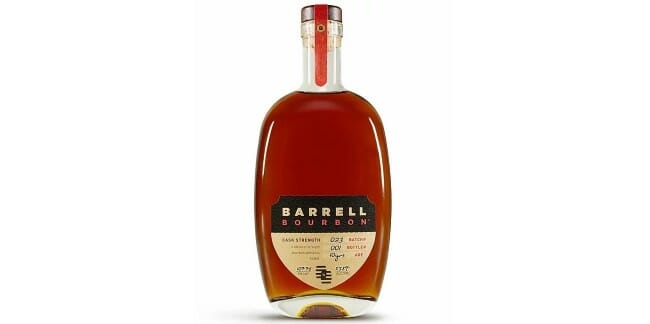
There’s a reason why whiskey geeks increasingly get excited about hype-generating blenders like Barrell—these companies are often finding gold and unearthing it from distilleries where those stocks might be underappreciated, and the unique nature of their blends means that every batch of a bourbon like Barrell is truly distinct and often quite different from one another.
Batch 23, released this spring, is a blend of 10, 12 and 15-year-old bourbons from Kentucky, Indiana and Tennessee, and more or less splits the difference in terms of its influences. It contains some oak-forward influences, maple and distinctive nuttiness, but stays on the drier side overall, with some beautiful dark fruit and baking spice highlights on both the nose and the palate. As I wrote previously:
On the nose here, you can definitely get the sense that this is some older bourbon stocks, with a distinctly toasted character and notes of molasses, old oak, cinnamon and strawberry fruitiness. There’s a slight doughiness to it, with a pastry-esque dimension like baking puff pastry, along with hints of rye spice. On the palate, this one develops more of a nuttier character, with some “nut butter” notes that makes me think of bigger Beam bourbons like Bookers or Bakers. It’s not particularly sweet, however, with notes of slightly bitter caramel sauce and strawberry jam, roasted nuts and lots of oak on the back end. Oaky tannins develop late and lend it a bit of balancing bitterness, but not much. Notably, it isn’t particularly hot for the 107 proof; the ethanol character is mild and enticing. This is powerful bourbon, but supple at the same time, and actually fairly dry when all is said and done.
Having recently tasted the more tropically fruity Barrell Bourbon Batch 24 as well, I can report that Batch 23 is quite different, a bit more classical, and ultimately my favorite of the two.
3. Larceny Barrel Proof (Batch B520)MSRP: $50
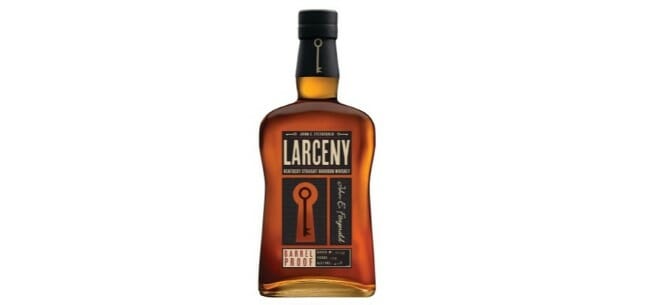
Larceny is essentially Heaven Hill’s answer to Maker’s Mark—an affordable (usually $20-25), easy-drinking wheated bourbon that offers a change of pace from all of the distillery’s traditional bourbons and Kentucky ryes. It only made sense to follow the model of the beloved Elijah Craig Barrel Proof, then, and start offering a barrel proof version of Larceny, although one must note that this one carries a “6-8 year” age statement rather than the 12 of ECBP, presumably because the older Heaven Hill wheated bourbon distillate is intended to eventually become $150 bottles of 15-year-old Old Fitzgerald. The Larceny Barrel Proof, in comparison, is a damn good value, as there aren’t many $50 barrel proof bourbons left on the market, and few barrel proof wheaters in general. Consequently, you may see retailers jack the price of this one up $20 or $30 more if you’re not careful.
The first batch of Larceny Barrel Proof, A120, was released at the end of 2019 and was a bit of an odd beast, one that seemed fairly divisive to whiskey geeks. I found it to be somewhat unpleasantly on the hot side, with a very chocolate-forward palate (and flashes of red fruit) that were intriguing, but somewhat overpowered by the proof. Why the heat presented so strongly here, but not in most ECBP batches that are even stronger, isn’t entirely clear, although the additional aging of the Elijah Craig likely acts to tame it a bit. Heaven Hill recently released the second batch of Larceny Barrel Proof (B520), however, so let’s see how it compares, and whether it can give the likes of Weller Full Proof a run for its money. This one weighs in at 122.2 proof.
On the nose, I get a more muted but balanced profile than the A120, with less of the distinct cocoa impressions and more of a combination of caramel sauce and biscuity, doughy wheat. There’s some toast, and Cheerios-esque cereal notes, along with some florals and molasses. Ethanol is there, but it doesn’t seem terribly overt in its booziness, which is fine by me.
On the palate, this one is quite doughy and grain forward, with lots of wheaty breadiness, slathered in honey and light caramel, and plenty of vanilla bean. This tastes, in fact, like how I believe someone who had never sampled wheated bourbon would expect a wheater to taste—very rich, but quite bready at the same time. Residual sweetness is on the high side, and the ethanol certainly comes out swinging here on the palate—a few drops of water help cool it down, but one wishes that this bourbon was as approachable at this proof as ECBP typically is, with its more integrated ethanol character. All in all, however, I like this B520 batch more than the initial offering, and am hopeful that the Larceny Barrel Proof line is moving in the right direction.
4. Oban Little Bay Single Malt Scotch WhiskyMSRP: $50-60
Of all the stories or trends that have encapsulated the past decade in the scotch whisky sphere, it’s probably been the rise of non-age-statement (NAS) malts that has ultimately been the most significant overall development in terms of how it’s helped to redefine the consumer’s idea of quality whisky. The 2010s began as a decade when age statements were still viewed by most drinkers as de facto symbols or guarantees of a whisky’s baseline of quality, but by the time those 10 years had ended, much had changed. A year number on the bottle simply doesn’t carry the weight of importance it once did, and it’s whiskies like Laphroaig Quarter Cask and Talisker Storm that helped to normalize the idea of drinking NAS single malts. Soon, most of the classic malt distilleries were jumping on board with their own NAS malts, and that includes the West Highland staple of Oban.
Oban 14, as I’ve written about in the past, is one of my favorite flagship malts—an elegant balance of malty sweetness, orchard fruit and subtle earthiness from its seaside origin point, without a ton of overt peaty smoke. It strikes a beautiful balance between contrasting flavor profiles. Oban Little Bay, meanwhile, is aged in a variety of barrels rather than simply American refill bourbon, as the flagship is—this malt also sees time in European sherry and virgin oak. These differences are likely meant to infuse more complexity into a younger spirit, to help it stand up against its 14-year-old flagship competition. They make it into a richer, sweeter, somewhat more bombastic dram that will play especially well among those who don’t care about descriptors like “elegant.” As I wrote previously:
On the palate, this is fairly caramelized and rich, although pretty balanced when all is said and done. It’s slightly desserty on first blush, with notes of custard, creme brulee and vanilla bean, along with citrus and peach fruitiness, and buttery shortbread. It certainly reads as more decadent than the Oban 14, as it has leeched more of those vanillans from the oak, while retaining the faintest wisp of sour oak and smoke—there’s just a wee bit of earthiness involved, and the ending is slightly more dry as a result. It is perhaps a bit less complex than Oban’s flagship malt, and feels something more like an offering to those who aren’t looking to spend their time dissecting flavor profiles. It’s a bit friendlier and a bit more approachable, but it has enough going on to hold my interest.
5. Dickel Bottled-in-Bond Tennessee Whisky (Fall 2008)MSRP: $40
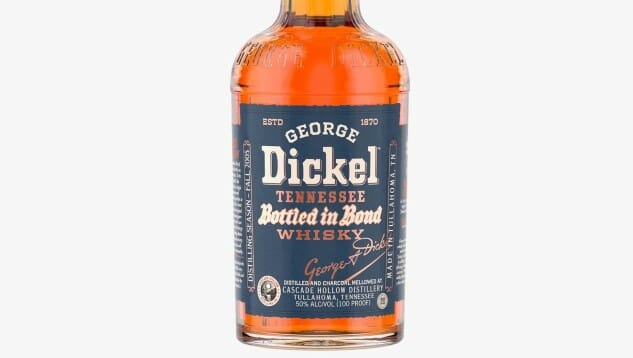
The first iteration of Dickel’s well-aged, Bottled-in-Bond Tennessee Whisky, known as Fall 2005, attracted quite a lot of attention for both its remarkably low price ($36 for a 13-year-old bottled-in-bond whiskey!) and the fact that it won several awards, eventually being chosen by Whisky Advocate as their #1 Whiskey of 2019. I confess, I was surprised to see that at the time—I sampled that release and found it to be solid but fairly unremarkable, with a strong level of focus on the nuttier aspects of its flavor profile: Lots of peanut shells, almond and peanut butter sweetness, complemented by cinnamon, stone fruit and oak tannins that I thought could stand to be a bit less expressive. I certainly couldn’t argue with the crazy value for that age statement and proof, but it wasn’t a whisky I felt compelled to revisit often.
Now, however, Dickel has put out a second vintage of this bottled-in-bond whisky, and they’ve changed things up in a few ways. The Fall 2008 release is a bit younger, with an 11 rather than 13-year age statement, but the same 100 proof you expect to see in bottled-in-bond whiskeys. The MSRP is still very low, though it has risen slightly to $40. Most notable, though, is the fact that I think this is actually the superior batch of Tennessee whisky, when all is said and done.
The nose strikes me as significantly more rich than the previous batch (although this is going by memory), with a more pronounced caramel/buttery toffee character, with stewed dark fruits and allspice. The palate, meanwhile, brings some of the nuttiness back into play, but this time it’s more of a roasted pecan character, which plays very well with cinnamon sugar, cocoa, ginger candy, molasses cookie and hints of maple. This is a very tasty whisky indeed, and at $40 it’s a freakin’ steal in this market. Dickel has always been a go-to for value in the whiskey world, and I can’t help but think that there are a lot of classic Kentucky distilleries that would try to charge twice as much (or even more!) for this exact same liquid.
Jim Vorel is a Paste staff writer and resident brown liquor geek. You can follow him on Twitter for more drink writing.
